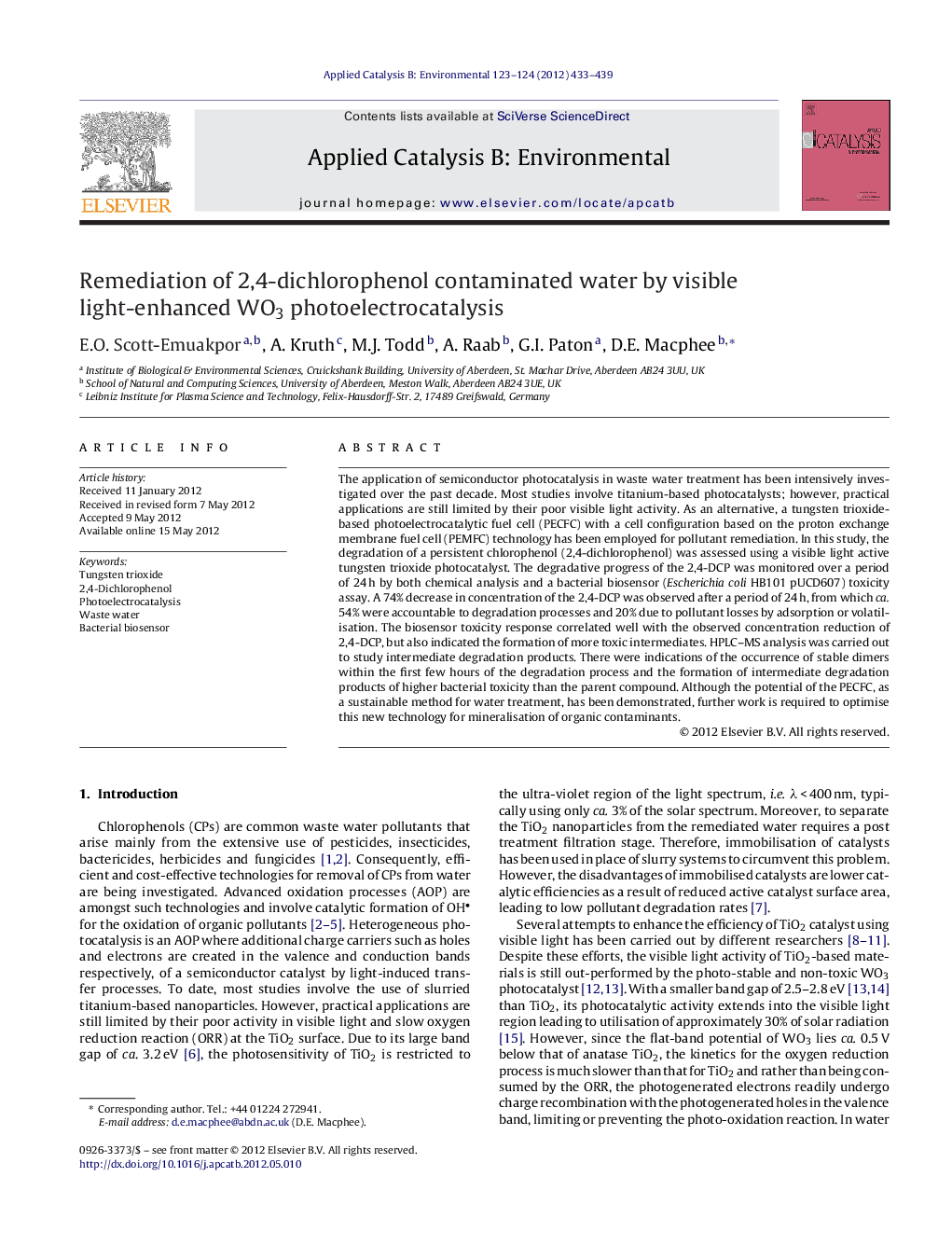| Article ID | Journal | Published Year | Pages | File Type |
|---|---|---|---|---|
| 46163 | Applied Catalysis B: Environmental | 2012 | 7 Pages |
The application of semiconductor photocatalysis in waste water treatment has been intensively investigated over the past decade. Most studies involve titanium-based photocatalysts; however, practical applications are still limited by their poor visible light activity. As an alternative, a tungsten trioxide-based photoelectrocatalytic fuel cell (PECFC) with a cell configuration based on the proton exchange membrane fuel cell (PEMFC) technology has been employed for pollutant remediation. In this study, the degradation of a persistent chlorophenol (2,4-dichlorophenol) was assessed using a visible light active tungsten trioxide photocatalyst. The degradative progress of the 2,4-DCP was monitored over a period of 24 h by both chemical analysis and a bacterial biosensor (Escherichia coli HB101 pUCD607) toxicity assay. A 74% decrease in concentration of the 2,4-DCP was observed after a period of 24 h, from which ca. 54% were accountable to degradation processes and 20% due to pollutant losses by adsorption or volatilisation. The biosensor toxicity response correlated well with the observed concentration reduction of 2,4-DCP, but also indicated the formation of more toxic intermediates. HPLC–MS analysis was carried out to study intermediate degradation products. There were indications of the occurrence of stable dimers within the first few hours of the degradation process and the formation of intermediate degradation products of higher bacterial toxicity than the parent compound. Although the potential of the PECFC, as a sustainable method for water treatment, has been demonstrated, further work is required to optimise this new technology for mineralisation of organic contaminants.
Graphical abstractFigure optionsDownload full-size imageDownload as PowerPoint slideHighlights▸ Degradation of 2,4-DCP was investigated using a WO3 photoelectrocatalytic fuel cell. ▸ The WO3 photoelectrocatalyst was active in the presence of visible light. ▸ The application of an external bias enhanced the degradation rate of the cell. ▸ Degradative progress was assessed by chemical and biosensor toxicity analyses. ▸ WO3 is potentially an alternative photocatalyst for treatment of contaminated water.
